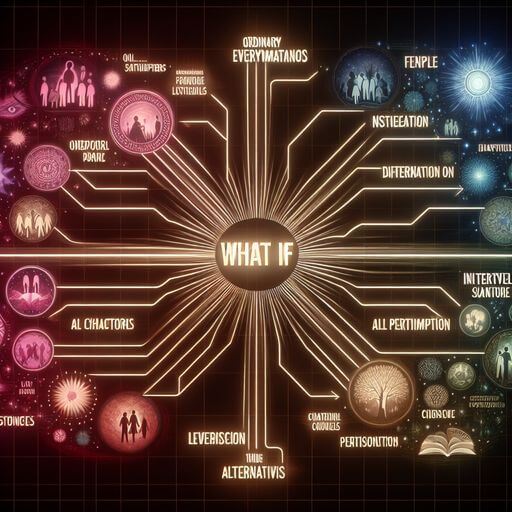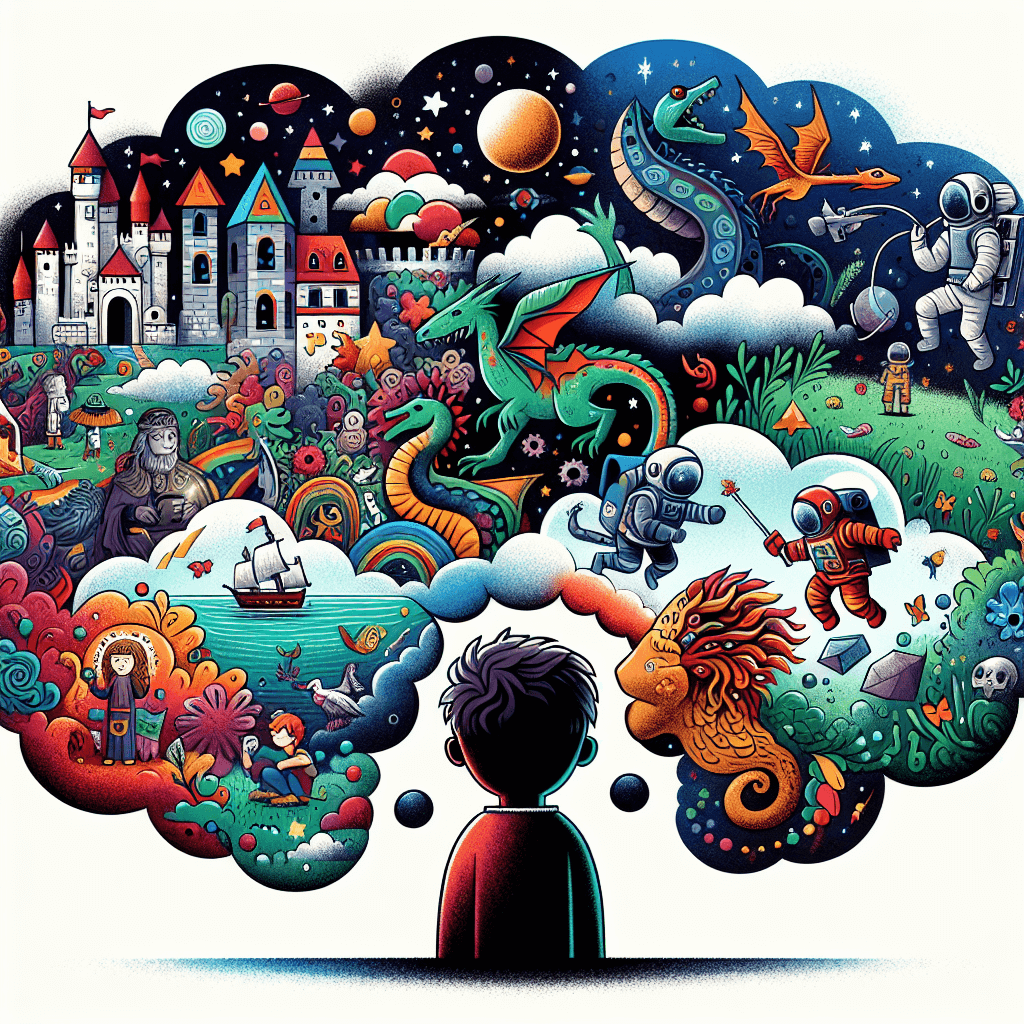· Maika Team · creative_storytelling · 6 min read
The Power of 'What If?': Teaching Story Modification
How to help children reimagine and modify existing stories

“What if?” These two simple words hold immense power, especially when it comes to igniting a child’s imagination and deepening their understanding of stories. In this post, we’ll explore the power of “What if?” and how you can use this question to teach story modification, encouraging your child to become an active participant in the storytelling process.
The Magic of “What If?”
“What if?” is more than just a question; it’s an invitation to explore possibilities. It encourages children to think critically, creatively, and divergently. When applied to stories, “What if?” can unlock new perspectives, challenge assumptions, and foster a deeper connection with the characters and plot.
Why Story Modification Matters
Modifying stories isn’t about “improving” them; it’s about engaging with them on a deeper level. It helps children:
- Develop critical thinking skills: Evaluating plot points and character motivations.
- Enhance creativity and imagination: Exploring alternative scenarios and outcomes.
- Improve comprehension: Understanding the cause-and-effect relationships within the story.
- Build empathy: Considering different perspectives and motivations.
- Boost confidence: Feeling empowered to shape and influence narratives.
Getting Started with Story Modification
Here are some practical tips for introducing story modification to your child:
1. Choose the Right Story
Start with familiar stories that your child enjoys. This could be a classic fairy tale, a favorite picture book, or even a chapter from a longer novel. Familiarity provides a solid foundation for exploring alternatives.
2. Ask Open-Ended “What If?” Questions
Instead of leading questions, use open-ended prompts that encourage your child to think freely. For example:
- “What if Cinderella didn’t want to go to the ball?”
- “What if the wolf in Little Red Riding Hood was actually friendly?”
- “What if the three little pigs decided to build their houses out of something completely different?”
- “What if the main character made a different choice at a critical moment?“
3. Focus on One Element at a Time
Don’t overwhelm your child with too many changes at once. Start by focusing on a single element, such as:
- Character: What if a character had a different personality or motivation?
- Setting: What if the story took place in a different time or location?
- Plot: What if a key event happened differently, or not at all?
- Theme: What if the story had a different message or moral?
4. Encourage Exploration, Not Perfection
The goal isn’t to create a “better” story, but to explore different possibilities. Emphasize that there are no right or wrong answers. Encourage your child to let their imagination run wild and to embrace unexpected ideas.
5. Write Down the Changes
As your child suggests modifications, write them down. This helps to visualize the changes and provides a framework for further exploration. You can use a simple notebook, a whiteboard, or even a digital document.
6. Act it Out
Bring the modified story to life by acting it out with your child. Use props, costumes, and different voices to enhance the experience. This can be a fun and engaging way to explore the consequences of the changes. If you have puppets, check out this blog post about Props and Puppets: Bringing Stories to Life.
”What If?” Scenarios: Examples for Different Age Groups
Here are some specific “What If?” scenarios tailored for different age groups:
Preschoolers (Ages 3-5)
Story: The Very Hungry Caterpillar by Eric Carle
What If? What if the caterpillar ate only healthy food? What would happen? What if the caterpillar turned into a different kind of insect?
Story: Goldilocks and the Three Bears
What If? What if Goldilocks brought a gift to the bears? What if the bears weren’t home when Goldilocks arrived?
Early Elementary (Ages 6-8)
Story: The Tortoise and the Hare
What If? What if the hare didn’t stop to take a nap? What if the tortoise had a friend to help him?
Story: Cinderella
What If? What if Cinderella’s stepmother was actually trying to help her? What if Cinderella didn’t want to marry the prince?
Late Elementary/Middle School (Ages 9-13)
Story: Little Red Riding Hood
What If? What if Little Red Riding Hood knew martial arts? What if the wolf was misunderstood and just needed a friend?
Story: The Three Little Pigs
What If? What if the wolf had a good reason for wanting to blow down the pigs’ houses? What if the pigs worked together to build one super-strong house?
Taking it Further: Creative Extensions
Once your child is comfortable with basic story modification, you can explore more creative extensions:
1. Write a New Ending
Challenge your child to write a completely new ending to the story, incorporating the changes they’ve made. How does the story resolve differently? What lessons are learned?
2. Create a Character Backstory
Encourage your child to create a backstory for one of the characters, explaining their motivations and actions. This can add depth and complexity to the story.
3. Change the Genre
Imagine the story in a different genre, such as science fiction, mystery, or comedy. How would the story change? What new elements would be introduced? Transforming classic tales can be fun, read more about it in this post: Transforming Classic Tales: A Modern Approach.
4. Illustrate the Modified Story
Have your child create illustrations to accompany the modified story. This can be a great way to visualize the changes and bring their ideas to life. If your child likes drawing, this post can be helpful: From Drawing to Story: Using Your Child’s Art as Inspiration.
5. Turn it into a Play
Adapt the modified story into a short play or skit. This can be a fun and collaborative activity for the whole family.
The Role of AI in Story Modification
AI-powered storytelling tools, like Maika, can be a valuable resource for exploring story modification. These tools can:
- Generate alternative plot points: Providing fresh ideas and inspiration.
- Create character profiles: Helping to develop more nuanced and complex characters.
- Offer different perspectives: Presenting the story from the viewpoint of different characters.
You can even use AI to create educational story variations. Learn how in this post: Using AI to Create Educational Story Variations.

Overcoming Challenges
While story modification can be a rewarding experience, you may encounter some challenges:
- Resistance to change: Some children may be resistant to changing their favorite stories. Be patient and encourage them to see it as a fun experiment.
- Difficulty with abstract concepts: Younger children may struggle with abstract concepts like character motivation or theme. Use concrete examples and visuals to help them understand.
- Lack of confidence: Some children may lack confidence in their creative abilities. Provide positive reinforcement and encourage them to take risks.
Final Thoughts: Embracing the “What If?”
The power of “What If?” lies in its ability to unlock imagination, foster critical thinking, and deepen engagement with stories. By encouraging your child to modify existing tales, you’re not just teaching them about storytelling; you’re empowering them to become active creators and thinkers. So, embrace the “What If?” and embark on a journey of endless possibilities with your child.
What’s your favorite “What If?” question to ask about a story? Share your ideas in the comments below!





